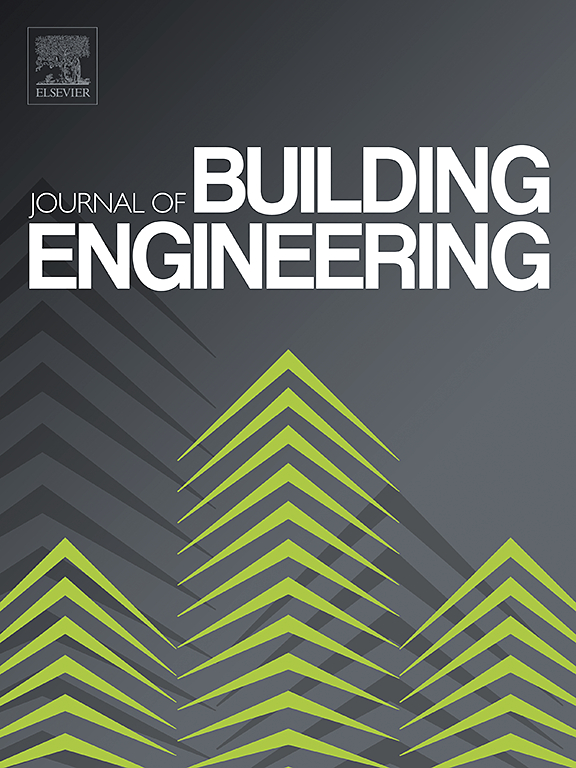环境友好型高阻尼结构抗震混凝土多尺度力学性能研究
IF 7.4
2区 工程技术
Q1 CONSTRUCTION & BUILDING TECHNOLOGY
引用次数: 0
摘要
对于抗震设防目标高、地震后仍能正常工作的重要公共服务建筑,普通混凝土难以满足其高阻尼性能要求。提高混凝土阻尼性能的传统方法往往大大削弱了混凝土良好的抗压性能。解决混凝土阻尼性能与抗压性能互斥问题和高碳排放问题。首先,本研究提出了用橡胶(R)代替细骨料,用钢渣(S)和粉煤灰(FA)代替某些胶凝材料的方法。研制了一种环保型高阻尼混凝土(EHDC),该混凝土既具有高阻尼性能,又具有良好的抗压和抗拉性能,同时显著减少水泥消耗。其次,通过分子动力学模拟,从微观角度分析了R、S和FA对EHDC中Ca-O、Si-O和H-O键的影响,揭示了EHDC多尺度力学性能信息的传递机制。通过对Ca和Si离子的MSD分析,揭示了R对EHDC中离子扩散的影响。然后分别建立了钙离子和硅离子扩散系数与弹性模量的关系模型。分析了轴向拉伸作用下EHDC的阻尼性能和应力应变关系。最后,选择了具有良好抗压性能和阻尼性能的EHDC的最佳配比。结果表明,配制的EHDC能有效解决传统混凝土阻尼性能与抗压性能相互排斥、碳排放高的难题。R的加入可以降低EHDC中Ca-O键的成键,但Si-O键的成键有一定程度的增加。当R、S和FA的取代率在20% ~ 25%之间时,EHDC中Ca和Si离子的MSD线性斜率最大。当R、S、FA的取代率均为10%时,EHDC在保持混凝土抗压性能的同时表现出优异的阻尼性能。微观离子扩散与宏观弹性模量之间的跨尺度力学信息传递的实现,为EHDC的多尺度设计与开发提供了理论依据。本文章由计算机程序翻译,如有差异,请以英文原文为准。
Research on multi-scale mechanical properties of environment-friendly high-damping concrete used for structural seismic mitigation
Ordinary concrete is difficult to meet the high damping performance requirements of important public service buildings that have high seismic fortification goals and can still work normally after earthquakes. Traditional methods for improving the damping performance of concrete often greatly weaken its good compressive performance. To solve the problem of mutual exclusion between damping and compressive performance, as well as high carbon emissions for concrete. Firstly, this study proposes a method of using rubbers (R) instead of fine aggregates, and steel slags (S) and fly ashes (FA) instead of some cementitious materials. An environment-friendly high-damping concrete (EHDC) is formulated, which combines high damping performance with good compressive and tensile performance while significantly reducing cement consumption. Secondly, through molecular dynamics simulations, the influence of R, S and FA on Ca-O, Si-O and H-O bonds in EHDC is analyzed from a microscopic perspective, and the transmission mechanism of multi-scale mechanical property information for EHDC is revealed. The influence of R on ion diffusion in EHDC is revealed through MSD analysis of Ca and Si ions. Then, the relationship models between the diffusion coefficients of Ca ions and Si ions and the elastic modulus are established separately. The damping performance and the stress-strain relationship of EHDC under axial tension are analyzed. Finally, the optimal formulation ratio of EHDC that combines good compressive and damping properties is selected. The results indicate that the formulated EHDC can effectively solve the difficult problem of the mutual exclusion between damping performance and good compressive performance, as well as high carbon emissions for traditional concrete. The addition of R can reduce the bonding of Ca-O bonds in EHDC, but there is a certain degree of increase in the bonding of Si-O bonds. When the substitution rates of R, S and FA are between 20% and 25%, the linear slope of MSD for Ca and Si ions in EHDC is the largest. When the substitution rates of R, S and FA are all 10%, EHDC exhibits excellent damping performance while retaining good compressive performance of concrete. The achievement of cross-scale mechanical information transmission between microscopic ion diffusion and macroscopic elastic modulus provides a theoretical basis for the multi-scale design and development of EHDC.
求助全文
通过发布文献求助,成功后即可免费获取论文全文。
去求助
来源期刊

Journal of building engineering
Engineering-Civil and Structural Engineering
CiteScore
10.00
自引率
12.50%
发文量
1901
审稿时长
35 days
期刊介绍:
The Journal of Building Engineering is an interdisciplinary journal that covers all aspects of science and technology concerned with the whole life cycle of the built environment; from the design phase through to construction, operation, performance, maintenance and its deterioration.
 求助内容:
求助内容: 应助结果提醒方式:
应助结果提醒方式:


